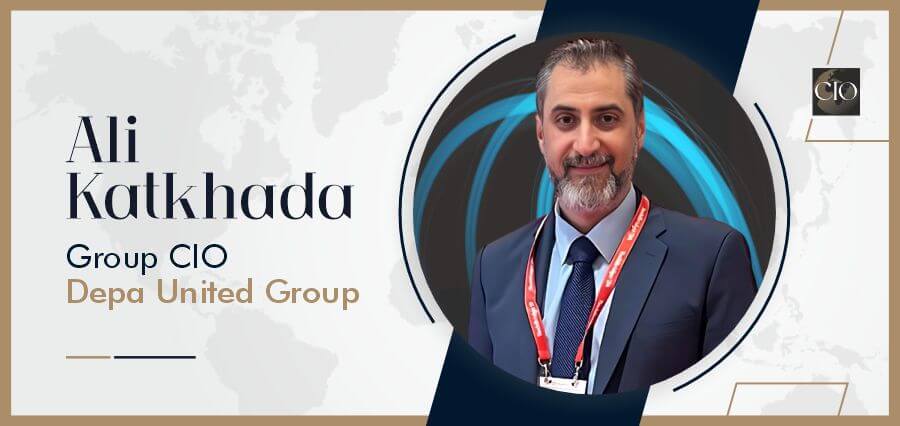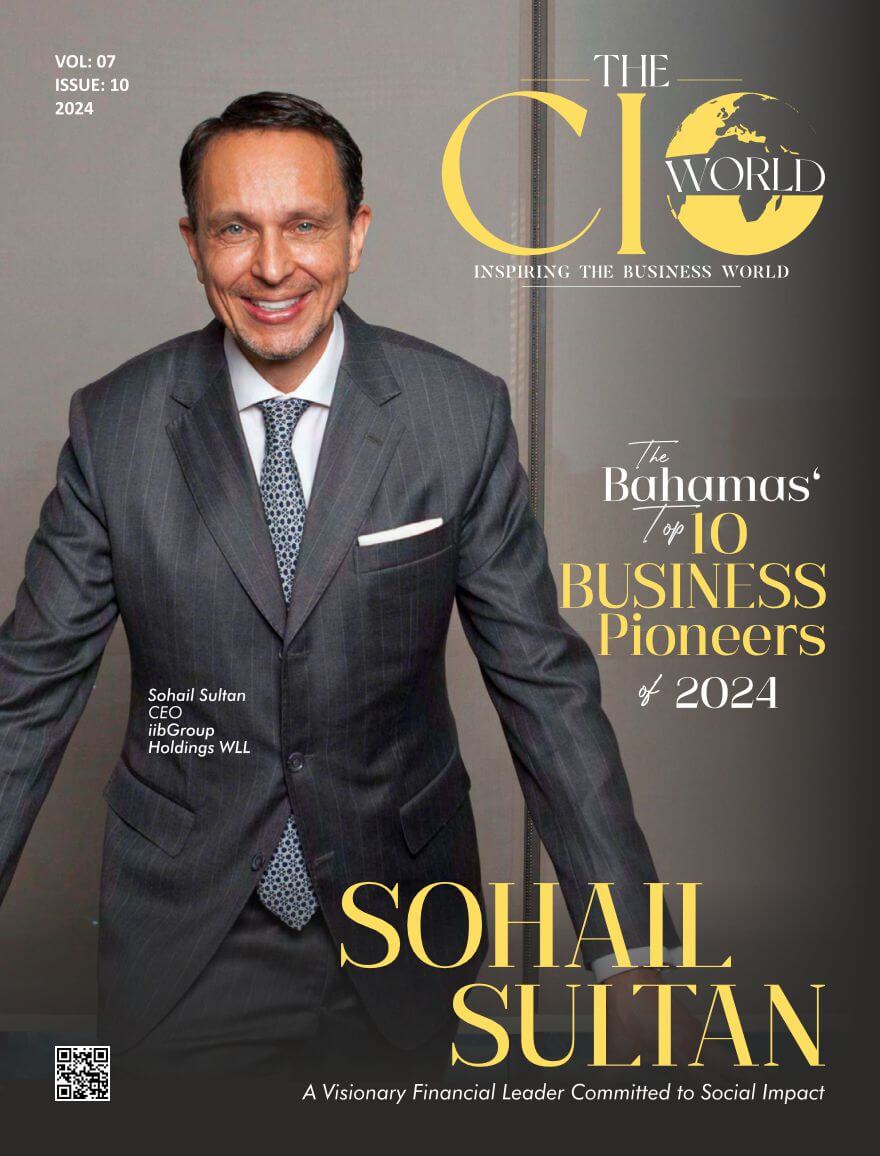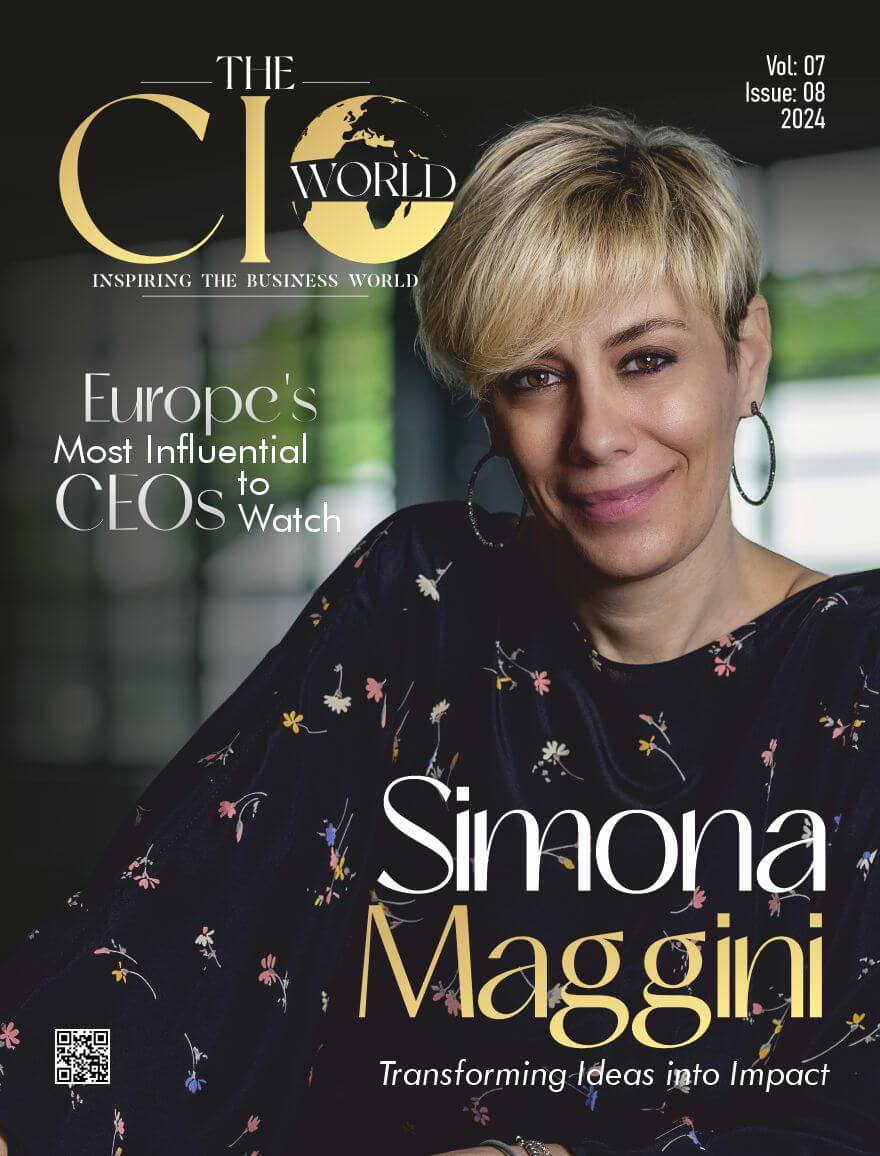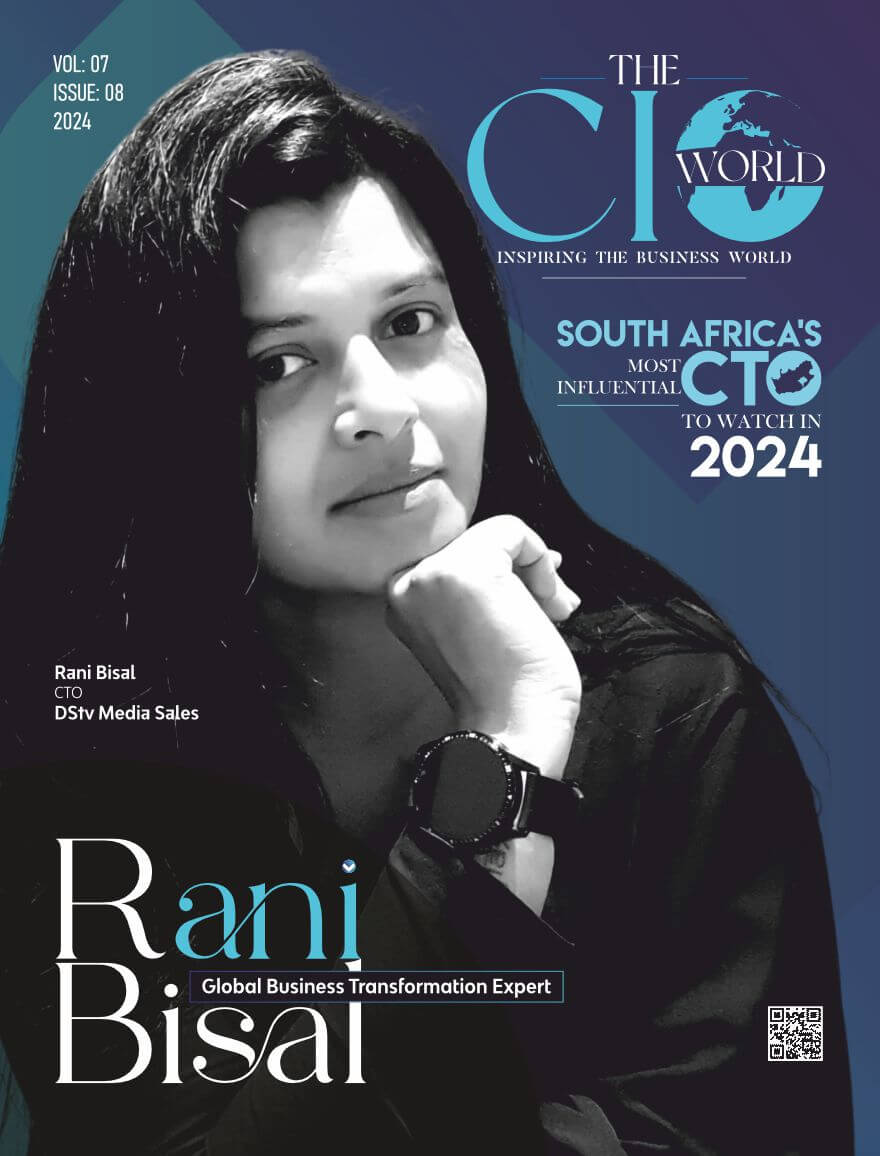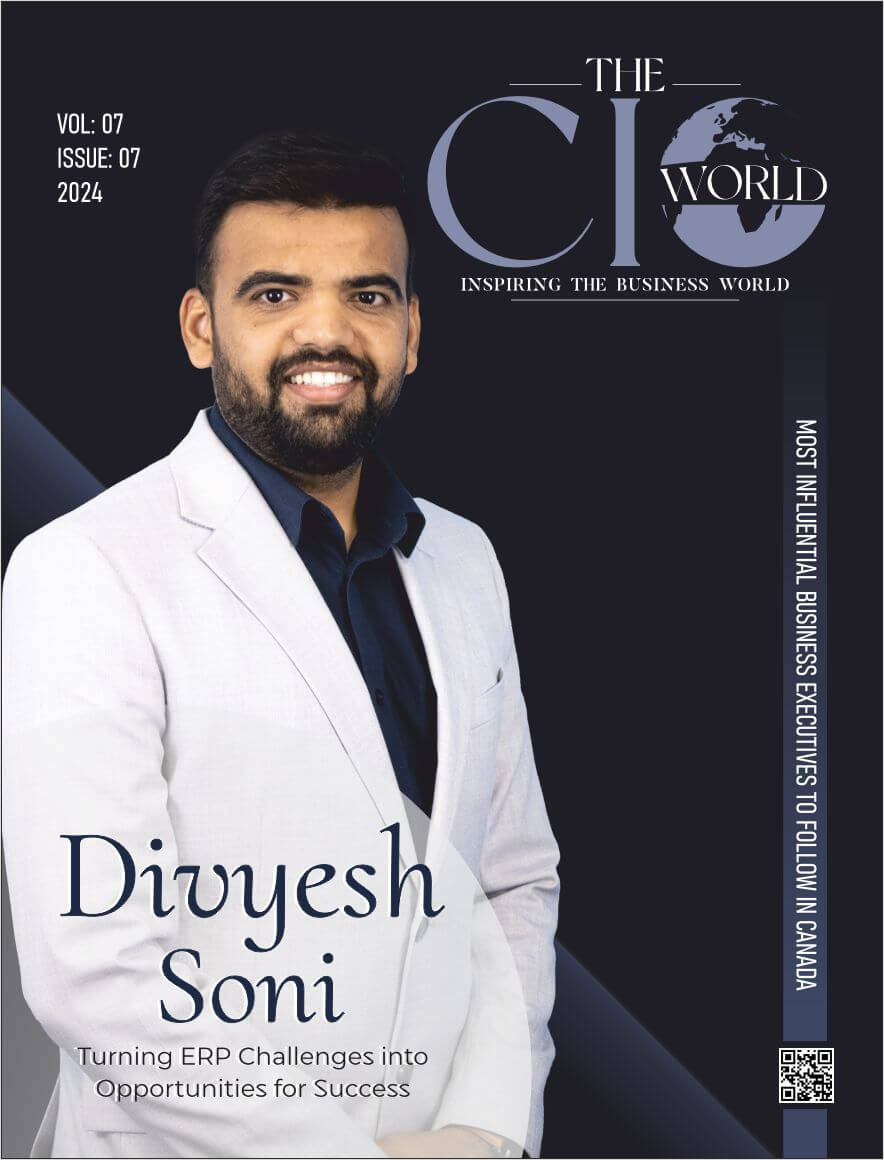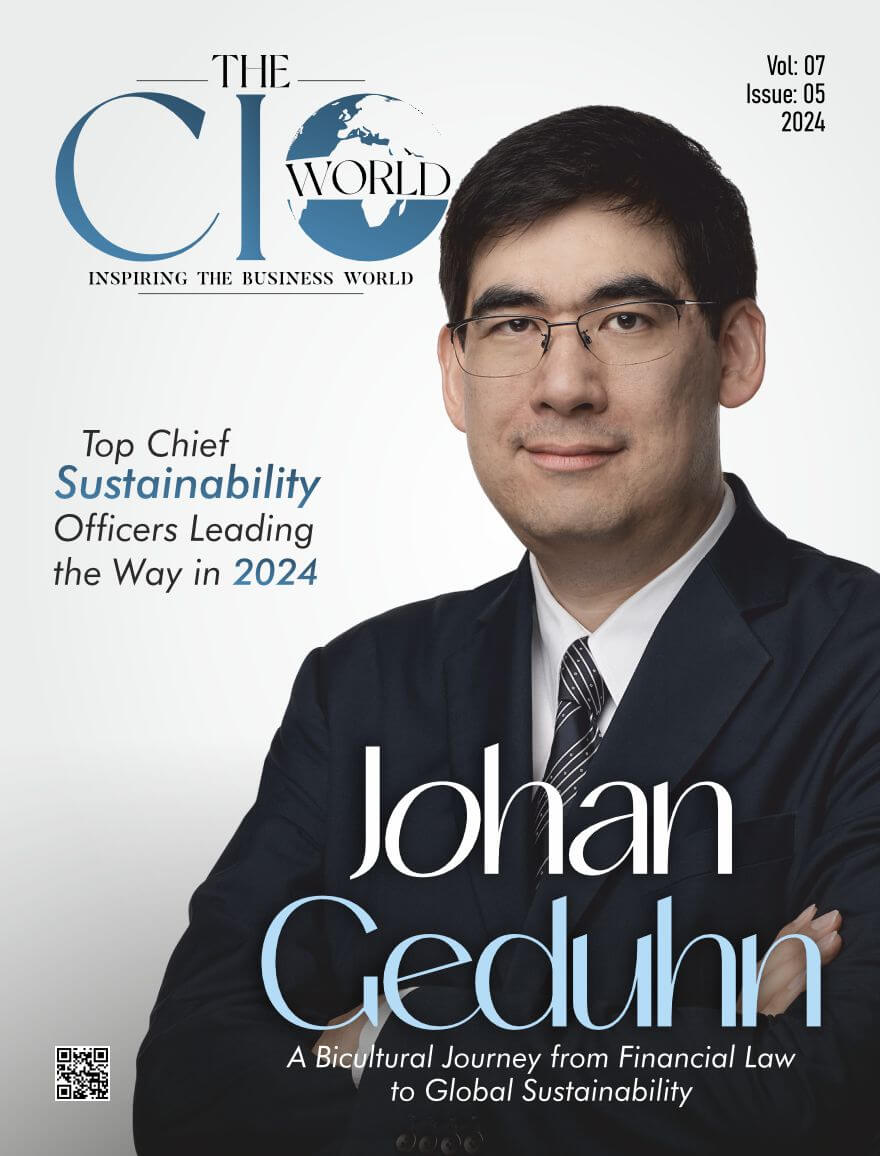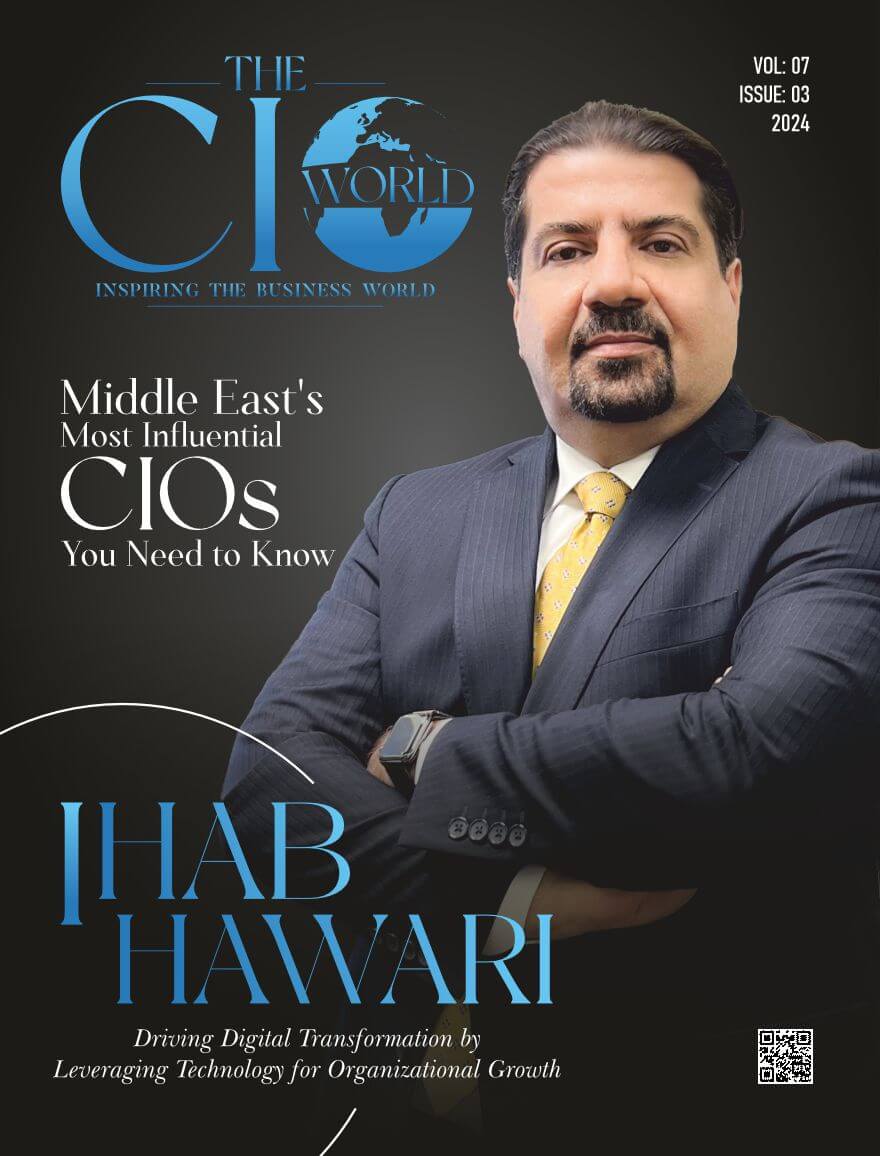Leveraging Technology to Drive Cultural Change and Business Transformation!
Innovation is not about technology; it is about the people who make it happen through their inventiveness, teamwork, and persistent hunger for progress. While technology delivers the tools and framework, it is the imagination and determination of people that propel it forward.
Consider the most influential innovators in history, from Thomas Edison to Steve Jobs. What differentiated them was their knowledge of technology and the ability to see possibilities where others saw limitations. They understood that innovation wasn’t confined to the realm of circuits and code; it was about understanding human needs, solving real-world problems, and enhancing the human experience.
Meet Ali Katkhada, Group Chief Information Officer (CIO) of Depa United Group, who personifies this principle. Bringing a wealth of experience and a stellar educational background to the table, Alis’s journey in the tech industry is nothing short of impressive. With a solid foundation as a Computer Engineer and a graduate diploma in Telecommunication Engineering, he further honed his skills by obtaining a Master’s Degree in Engineering and Technology Management from Portland State University in Oregon, USA. Not stopping there, Ali holds a prestigious array of certifications, including PMP, ITIL, AWS, EU GDPR Practitioner, OCP, Defi Master, and Blockchain Expert.
His career path is marked by significant milestones. Previously, Ali contributed his expertise at Saber Consulting in the US, where he played a momentous role in providing cutting-edge IT consultancy services, including developing voting solutions for the federal US government. Transitioning to the Middle East, he assumed the role of Head of IT Department for a prominent global interior contracting group listed on various stock exchanges.
Currently at Depa United Group, Ali coordinates the digital transformation initiatives across all business units. The group’s portfolio spans diverse sectors, including hospitality, social infrastructure, economic infrastructure, yachts and marine projects, and aircraft projects across regions like the Middle East and North Africa, Europe, Asia, and North America. Notable projects under his purview include iconic landmarks like Burj Al Arab, Burj Khalifa, Atlantis, Fermont, Apple stores, Dubai Airport, Flame Towers in Baku, sun and sands in Singapore, and other prestigious hotels worldwide.
Below are the interview highlights:
Could you please brief us about Depa United Group and its inception story?
Depa Group is a leading interior contractor that comprises three key business units and investments, which span various sectors of the interior construction market.
The Group delivers hospitality, commercial (offices and retail), social infrastructure, economic infrastructure, yachts and marine, high-rise and low-rise residential, and aircraft projects in selected countries in the Middle East and North Africa, Europe, Asia, and North America.
Depa has proudly set the standards of excellence in interior implementation, as evidenced by the delivery of the most iconic projects in the Middle East, Asia, and other regions. Listed on the Nasdaq Dubai and headquartered in the United Arab Emirates and Saudi, Depa Group provides a solid supporting structure and guidance to its Key Business Units (KBUs). With an expansive geographic network, the group can deliver complex and prestigious projects across the globe.
Our business units and investments are all centered around two operating hubs in the UAE and Saudi, in addition to the German Super Yacht business. allowing Depa Group to act as a single point of contact for the most complex interior projects.
As a CIO, how would you approach aligning our technology strategies with our business objectives to drive growth and efficiency?
The CIOs who chose to work in non-IT businesses where IT is not the revenue generator but rather a cost center. What the business focuses on is revenue and gross profit. We have to understand that the role of IT has evolved beyond being just a business enabler; it has become a critical strategic partner integral to organizational success. In today’s digital age, IT is not merely a support function but a driver of innovation, efficiency, and competitive advantage. It plays a pivotal role in shaping business strategies, enhancing customer experiences, protecting the business investments and enabling new revenue streams.
In your opinion, what emerging technologies do you believe will have the most significant impact on our industry, and how would you integrate them into our existing infrastructure?
In my construction industry, there are several new emerging technologies from the fourth industrial revolution that I’m keeping an eye on and taking some initiative to try, like:
- 4D/5D Building Information Modeling (BIM): BIM is already widely used in our industry and in most of our projects in KSA and Dubai, but 4D/5D BIM adds time and cost dimensions, enabling real-time scheduling, cost tracking, and clash detection. This can optimize resource allocation, prevent delays, and improve project budgeting.
- Artificial Intelligence (AI) and Machine Learning (ML): AI automates repetitive tasks like safety analysis, material procurement, and progress tracking. ML can optimize project planning, predict risks, and recommend solutions.
- Internet of Things (IoT) and Sensor Technology: we have done in Depa one initiative in one of our projects as we implemented IOT in the helmet of the labor to measure manpower productivity, so we collect real-time data on performance, safety, movement, and environmental conditions. So if a carpenter is required on the fifth floor and he is on the first floor, that means he was hanging out and not working. All the construction sites appear on a heat map for HR to monitor labor productivity.
- Web 3, blockchain, NFT, Defi, Digital Twins, and Metaverse: I’m very fascinated with all these technologies and the disruption they can do to all industries and human life. Metaverse, for example, is poised to revolutionize construction by replacing expensive physical mockups. Clients can virtually experience different designs, materials, and colors, saving time and resources. We took the initiative long ago using the Unity gaming engine and VR technology, but now what Metaverse and digital twins can do is phenomenal work. We had a project in the metaverse showing what our group is capable of doing by showing our previously completed project portfolio together in one city in the metaverse. Furthermore, we have done a project in NFT for employee identity management and given some utility for them to enjoy.
How do you plan to ensure data security and compliance with regulations in our organization, particularly in light of evolving cybersecurity threats?
We set up a comprehensive cyber security strategy to ensure data security and regulatory compliance within our organization. This includes conducting regular risk assessments, deploying advanced security measures, setting up security awarness program including educating employees on cybersecurity best practices, quoarterly spam attack simulation, , staying updated on regulations as a publicly listed company, developing an incident response plan, continuously monitoring for threats, and fostering partnerships for insights and resources.
Can you provide examples of successful IT projects you’ve led in the past and the strategies you employed to ensure they were completed on time and within budget?
- ERP implementations across eight different jurisdictions
- NFT for employee identity management.
- Award-winning Metaverse for a corporate portfolio showcase and FFNE Catalogue
- IOT for labor performance management.
The primary strategy for ensuring the success of any IT project is to prioritize cultural change and empower individuals by understanding their concerns and aligning personal agendas with company goals. Implementing a robust change management strategy is essential to address users’ fears of replacement and mitigate disruptions caused by new technologies. Providing ample training, comprehensive manuals, instructional videos, establishing centers of excellence, and fostering focus groups are crucial steps. Additionally, fostering an incentive-driven culture with recognition and awards further motivates and engages stakeholders in the project’s success.
Collaboration and communication are crucial aspects of IT leadership. How do you plan to foster collaboration between IT and other departments within our company to enhance overall productivity and innovation?
Fostering collaboration between IT and other departments is crucial, and it’s part of the CIO’s role to cultivate a familial atmosphere within the department where everyone is committed to the function’s success. Additionally, the CIO serves as a bridge between IT terminology and simple business language. We established clear communication channels and encouraged collaborative projects.
Furthermore, we promoted a culture of transparency and knowledge sharing to boost productivity and drive innovation throughout the organization. This involved creating centers of excellence for each business function and serving as communities where all stakeholders discuss changes. Focus groups, comprising superusers, review and approve proposed changes before implementation by IT. Moreover, all training materials and policies are centralized within these centers of excellence.
Given the rapid pace of technological change, how do you stay updated on the latest trends and advancements in the field of information technology, and how would you leverage this knowledge for the benefit of our company?
Remaining abreast of technological trends is imperative for sustaining our company’s competitive advantage, especially given the rapid evolution of technology every six months. I actively engage in prominent IT summits, conferences, and professional networks, including participation in the CIO Club.
Moreover, I maintain an active presence in a private CIO WhatsApp group, where we collaboratively share insights, provide assistance, and address queries. Leveraging this knowledge, I aim to identify opportunities for integrating emerging technologies that align closely with our strategic business objectives.
Can you describe a challenging situation you encountered in a previous role as a CIO and how you successfully navigated through it to achieve a positive outcome?
In a previous role, I faced a challenge when implementing a new enterprise resource planning (ERP) system. The project encountered significant resistance from different stakeholders due to concerns about disruptions and usability. To overcome this, my team and I initiated comprehensive stakeholder engagement, including detailed change management program addressed concerns through transparent communication, central of excelence and provided extensive training and support.
Ultimately, these efforts led to a successful implementation with minimal disruptions and improved overall efficiency.
What metrics or KPIs do you believe are essential for measuring the effectiveness of our IT initiatives, and how would you ensure that our IT investments deliver tangible results?
The choice of KPIs depends on the specific role within IT. For technical team members, KPIs should primarily focus on technical aspects, such as system uptime, response times, user satisfaction, and project delivery within budget and timeline.
Conversely, for senior roles like the CIO, KPIs should align more closely with business objectives. These may include metrics related to revenue generation, backlog management, net profit, and the alignment between IT initiatives and overarching business goals. Ensuring such alignment guarantees that our investments yield tangible results in terms of efficiency gains, cost savings, and competitive advantages.
Cultural fit is essential for success in any leadership role. How would you describe your leadership style, and how do you envision it fitting into the culture of our company?
I embrace a leadership approach that is collaborative, adaptive, and results-oriented. My focus lies in cultivating robust relationships, fostering an innovative culture, and empowering team members to reach their full potential. I foresee my leadership style harmonizing seamlessly with the company culture, where teamwork, accountability, and continuous improvement are esteemed. I am dedicated to instigating positive transformations and actively contributing to the company’s success through effective IT leadership.
Could you please highlight any awards or recognitions you are honored with?
CIO of the Year 2024, Catalyst CIO, Best Metaverse Project.

